There are plenty of good reasons to build a kit car.
For some, it’s the chance to own a replica of a super-rare ride—one you won’t fear racking up miles and paint chips with.
For others, it’s an opportunity to create a unique vehicle tailored to your precise specs, making sure everything on the car is exactly the way you want it.
And still others simply enjoy the challenge of taking boxes of parts and transforming them into a complete, running automobile.
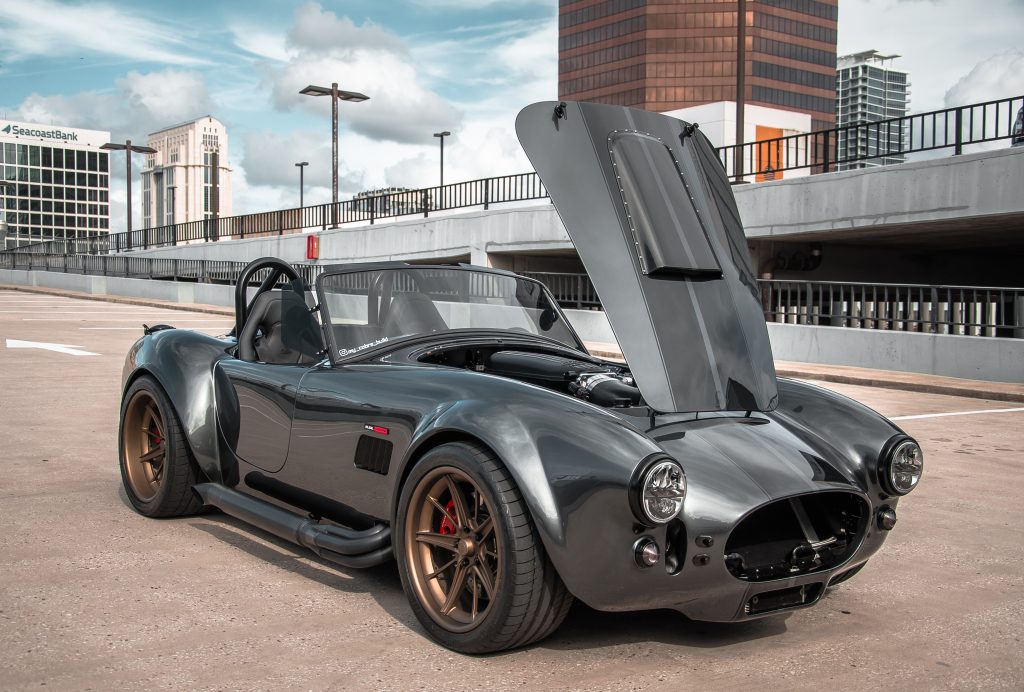
For Michael Craven, owner of this jaw-dropping Factory Five Mk4 Roadster, it was a bit of all three.
After selling his beloved SN95 Mustang SVT Cobra Terminator to fund an engagement ring, Michael told his soon-to-be wife “someday I’d like to actually own a real Cobra.”
“But obviously not a ‘real’ real Cobra,” he laughs. “I’m not a millionaire.”
Bit by the Kit Car Bug…err…Snake
It wasn’t all about owning a cool car though, as Michael describes, “I really just loved the idea of the challenge…diving in and getting my hands super dirty.”
And it didn’t take long before he got the itch to build. “I got connected with a couple of guys who had done it and went to some of the shows,” Michael explains. “It just becomes contagious after that.”
With the kit car idea already bouncing around his head, Michael began to assemble a hypothetical build sheet—but when he spotted a cheap Tremec TKO-600 manual transmission for sale at a Cobra show, he knew there was no going back.
“If I buy this transmission, we’re kinda hooked,” he joked to his wife. (Michael assures us that she was totally on-board with the entire project!)
Inevitably, the Tremec came home and took up residence in their garage—and the project was underway.
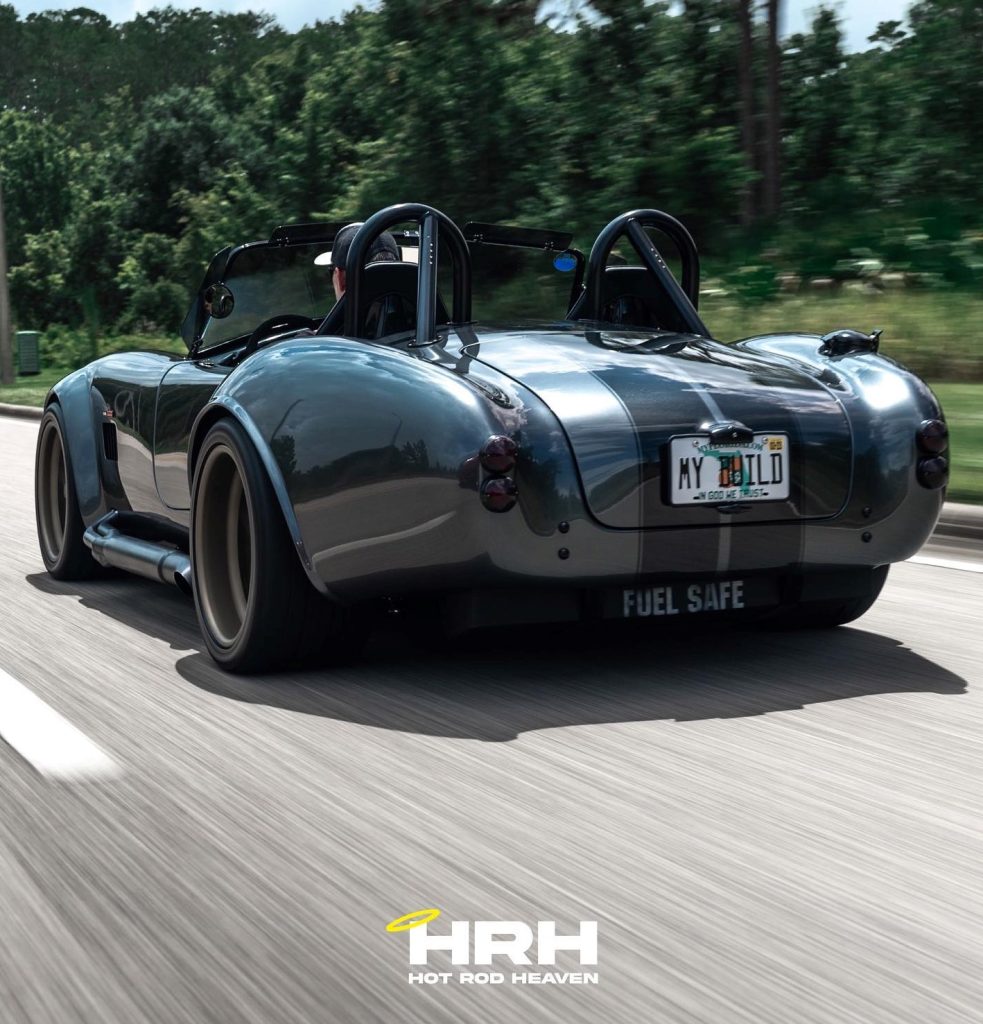
The Mk4 Roadster’s Drivetrain
Sure, with enough time, money, and fabrication, you can fit pretty much any drivetrain into one of these cars, but ahead of that Tremec in Michael’s Roadster lives a Ford Coyote 5.0L V8.
“I knew I wanted a more modern take. I didn’t want a carbureted motor,” he tells us. And with supplies of the O.G. Windsor-based 5.0L EFI engine drying up, it meant the Coyote was an obvious choice. “It’s the LS of Fords, pretty much,” he chuckles. “Pretty plentiful and they’ve got a lot of power for what they are.”
And Michael says the Factory Five folks made the engine choice even easier. “You tell Factory Five when you place your order, ‘this is the motor I want,’ and they’ll make sure the mounts are in the right place and everything.”
Out back is a rear end plucked from an S550 Mustang Performance Pack, complete with a 3.73 gearset and Torsen differential.
Summit Racing made a handful of parts combos tailored precisely to the Factory Five Mk4 Roadster. Click here to check them out.
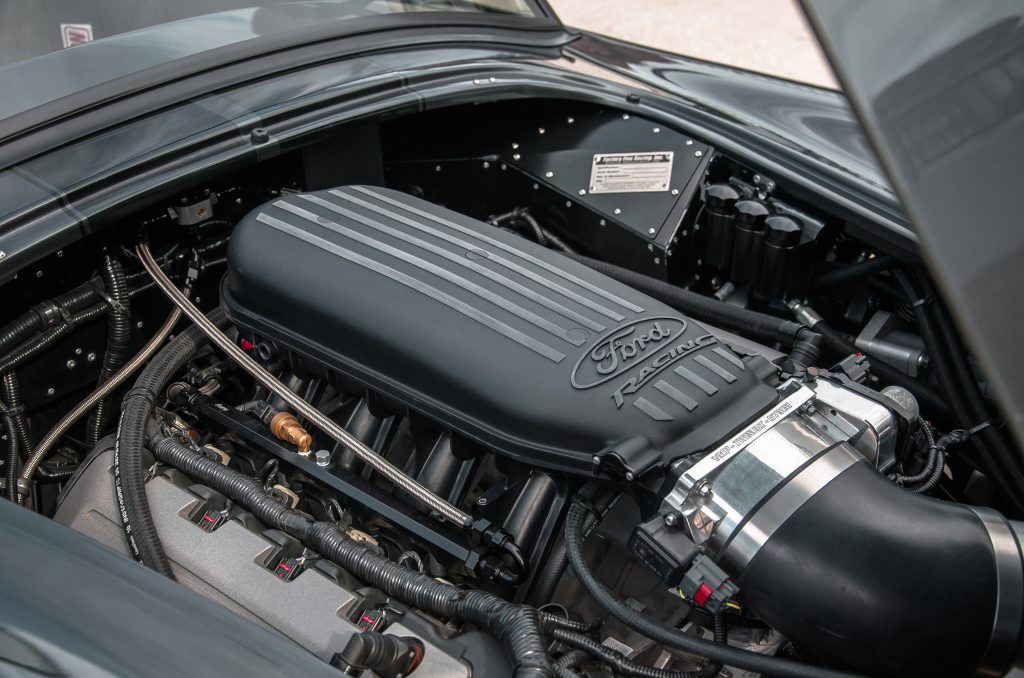
Titling & Registering a Kit Car
“You’ve got to get it completely registered. It doesn’t exist,” Michael explains. “You’ve got to get a title for it, the whole deal.” He goes on to describe a fairly straightforward process with the Florida DMV, aided in large part by the online forums—and he makes a special nod to the community surrounding the Factory Five kits.
“It really wasn’t that hard,” he reveals.
Though the process wasn’t without its entanglements. “[The DMV] had some issues over the last few years, so I had to get it titled as a 2021 ‘assembled from parts’ Roadster. There’s some weird nuance in there.”
Certainly the title/registration process is going to vary state-to-state, particularly in those regions with heightened emissions requirements. Please check your local laws and regulations before taking the plunge. Again, Michael says online kit car forums are a great place to start.
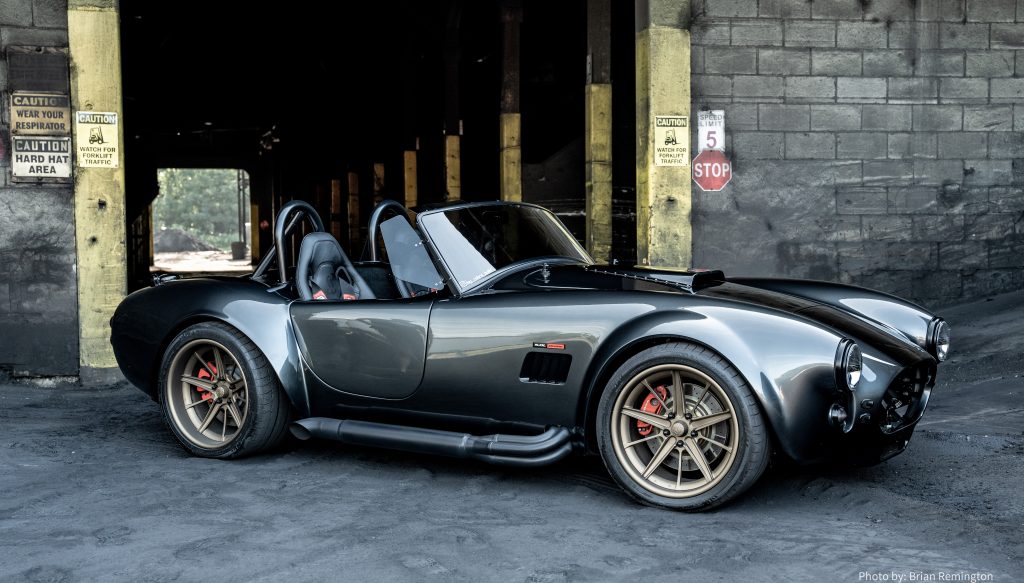
What Skills Do You Need to Build a Kit Car?
We asked Michael bluntly about his skillset before beginning the project, and what jobs he was prepared to farm-out to pros.
Turns out, once he had ordered his kit from Factory Five, he had a few months to wait before it arrived. During that time, he did a ton of homework—scouring other folks’ builds, perusing forum threads, and diving into the robust assembly manual that Factory Five supplies with its kits.
“It’s about three inches thick,” Michael laughs.
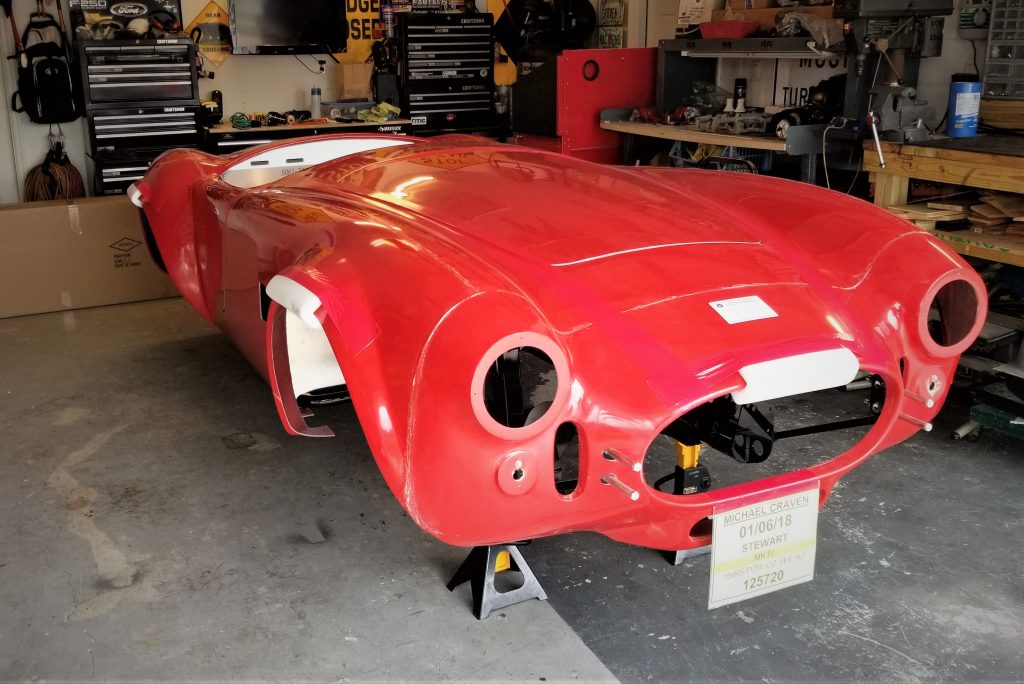
He considers himself “above average on handiness,” with an engineering degree and some experience in construction already, so the research allowed him to assess his abilities before the kit arrived. “It got to the point, where I was confident enough where I think I could do everything but paint work,” Michael explains.
And that’s pretty much how it played out. Michael did most everything outside of paint/body himself, learning the requisite skills along the way. “I bought a welder and taught myself how to weld some smaller things,” he says.
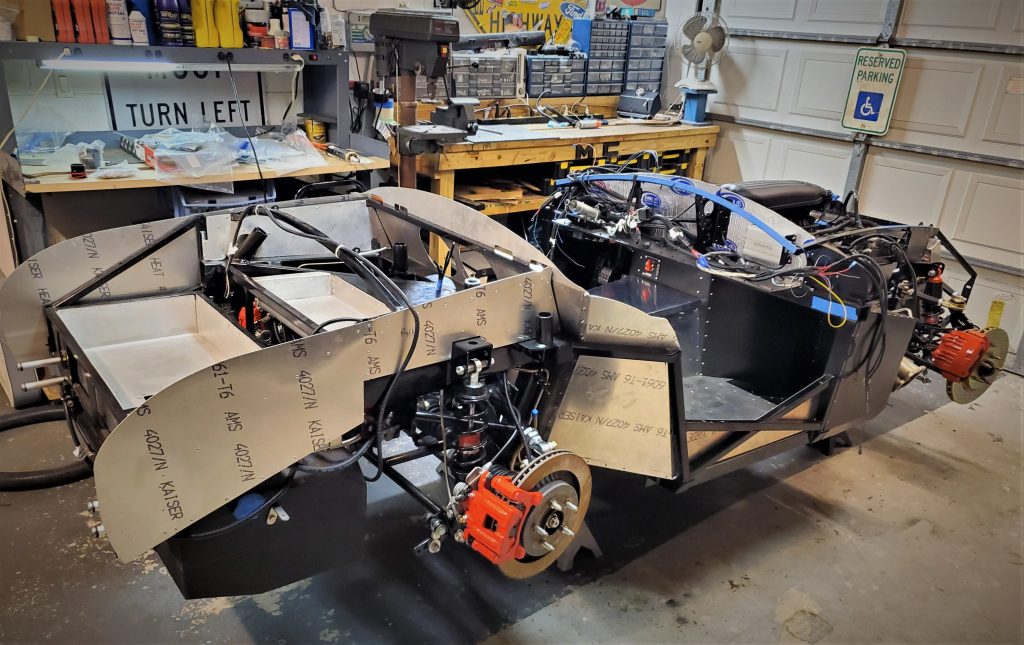
Then he alludes to a bunch of micro-learning opportunities, where he simply had to adapt and extend his current skills to meet new challenges.
Though he says things like the electrical and brake systems were a bit intimidating at first, once he jumped in and broke it down piece-by-piece, each job got much more manageable.
How Much Space & How Many Tools Do You Need?
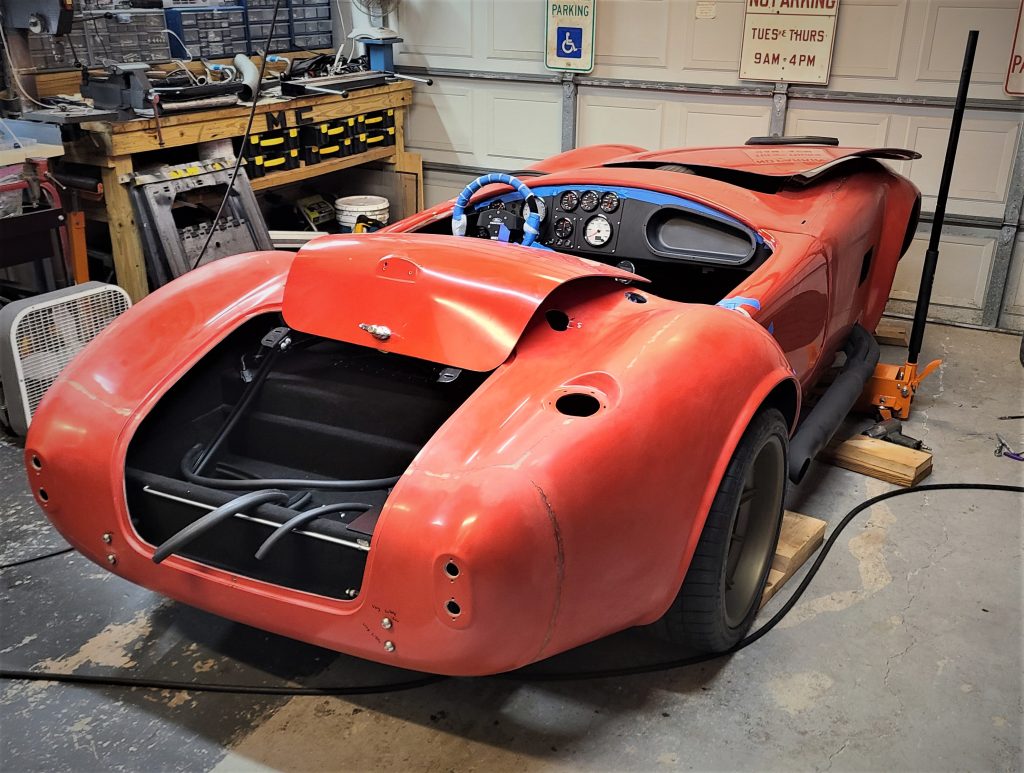
Michael tells us the build took place over a three year period, almost exclusively in his residential garage. Once the fiberglass body was removed from the chassis, it was placed on a homemade body buck and relocated outside the garage until the final assembly took place.
Though he had ample garage space to work in, Michael does mention how car parts starting filling up the rest of his home. “We had a couple of spare bedrooms that I jokingly called ‘the parts department’ for about three years,” he laughs.
Outside of the aforementioned welder, Michael’s build went together with basic hand tools. In fact, he tells us that Factory Five designs the base kit with no welding required—though he also admits that welding does come in handy if you have plans to customize your car.
Kit Car Customization
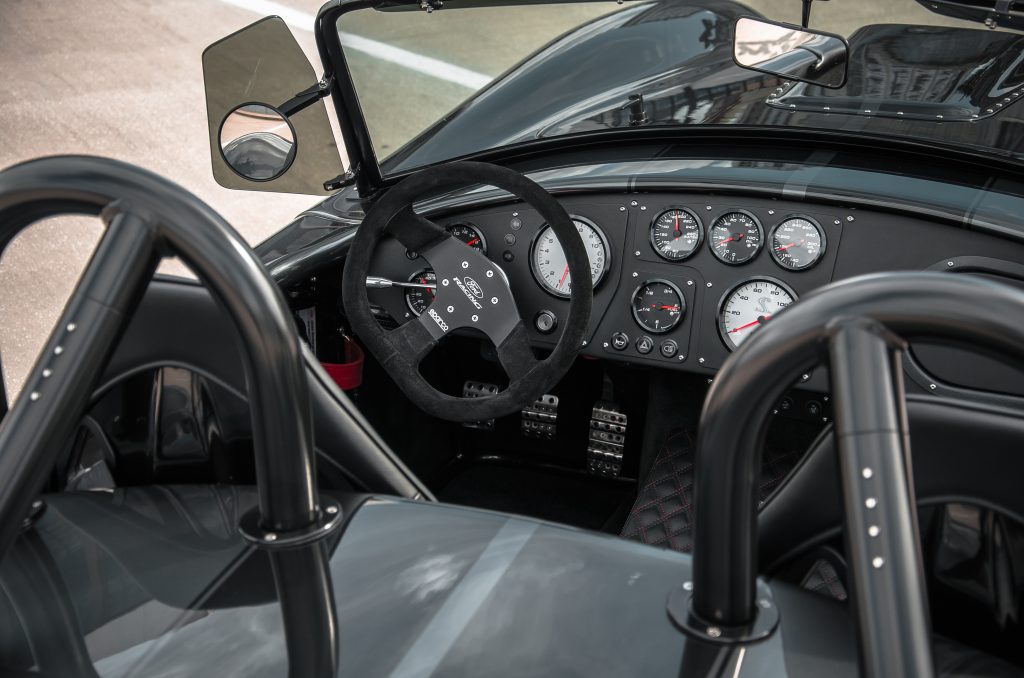
“[Factory Five] gives you a lot of options,” Michael says, but then goes on to describe how he ordered a more basic kit, which allowed him to choose things à la carte like custom gauges and specialty racing seats to make his car unique.
Michael also alludes to some other slick custom touches he designed into the car. For instance, the roll hoops use larger OD tubing, and were modified to each fit a quartet of small LED modules, which serve as a third brake light.
Other customization efforts are less conspicuous, as Michael says he deviated from the original plans occasionally to, say, relocate a bracket or make some other minor design tweak.
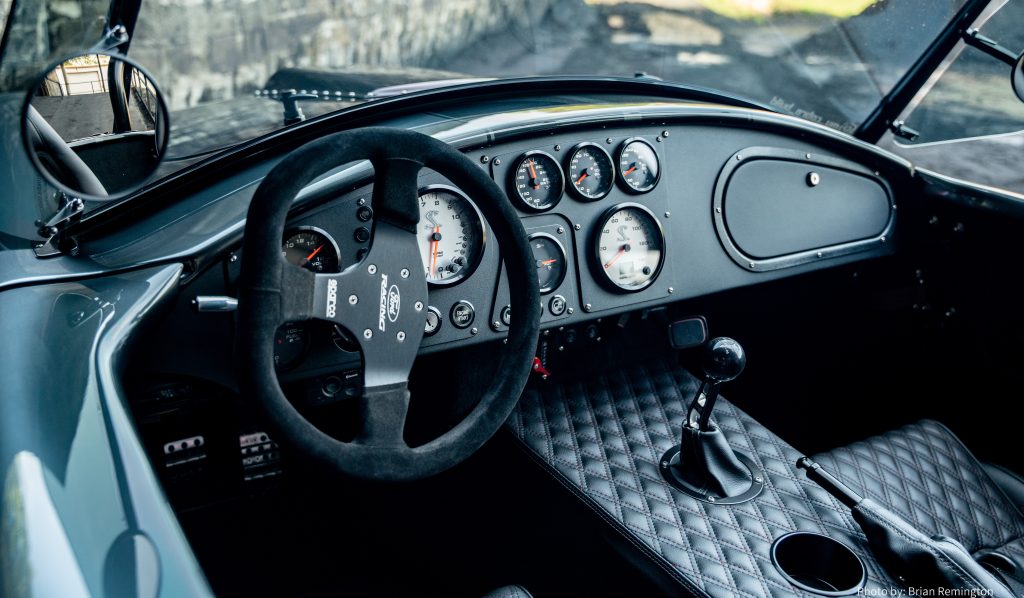
Advice to Would-Be Kit Car Builders
“The number one thing that I tell people,” Michael says, “is go to the big events.”
He goes on to describe a number of Cobra-specific regional meets that he attended prior to ordering his kit. Being able to see the cars firsthand, learn about all the options, and talk to people who have built similar kits can be a great way to glean tips and ideas.
Even during his build, Michael continued to go to these events to help steer the progress of his Mk4 Roadster.
And he stresses again the benefits of scouring online forums, as they played a huge role in guiding his build and getting complex questions answered.

What’s Next?
As we began to wrap up with Michael, it was clear that he was very, very pleased with the project. “The challenge was fun, I really enjoyed it,” he recalls.
We also asked him if he would build another one.
“Yes, absolutely…And I would like to,” he quickly snaps back. “Don’t know if it would be another Roadster, but yeah, for sure.”
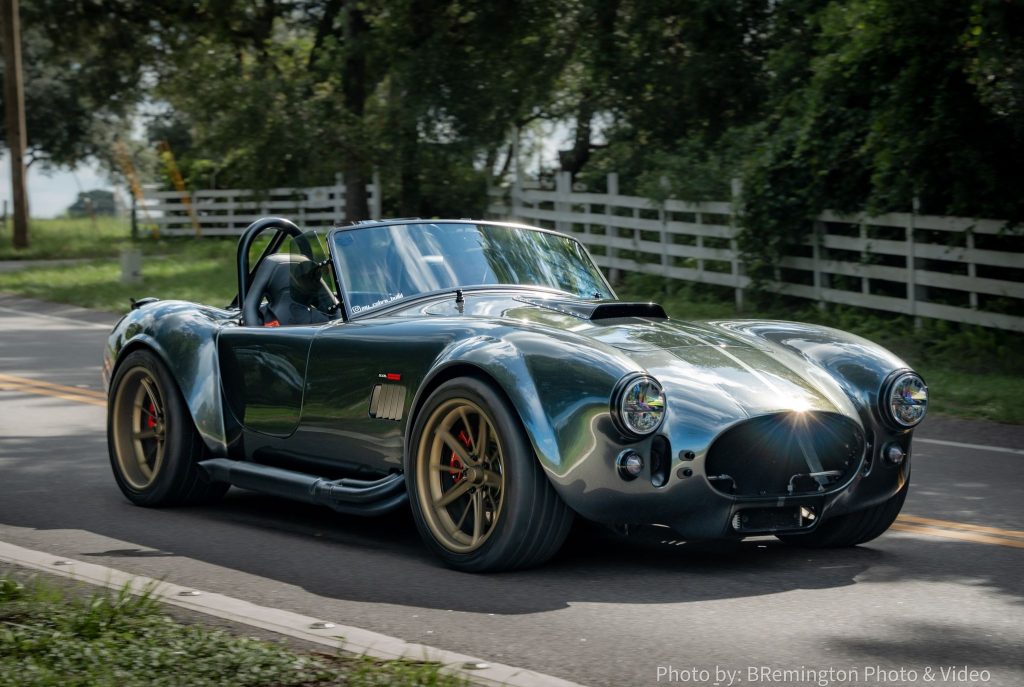
As to anyone mulling over the idea of building their own kit car, Michael offers these closing words.
“If you can do it and you’re on the fence. Do it—it’s awesome. It’s been really fun, being able to enjoy the car and the whole community.”
***
Michael’s got his own Instagram account where you see more pics of the car, click @my_cobra_build to check it out. And you can watch a video tour of the car below:

Loved seeing my pictures on this site! What a beautiful machine!
@Jacob Fico. Right! Nice work!
Beautiful build!
I’m building the same kit car check out my channel at Dan’s Garage https://youtube.com/channel/UCRWai9AYCwQO2C7YKt5f33w
Looks good Dan, just subscribed.
I enjoyed hearing of your journey and what I liked was your approach. I built an early MkIII and went carb, IRS w/torsen but after 10 years, I installed an EFI carb and a friend of mine installed a Coyote into his MKIV and now I see yours and I’m as excited for your journey as I was with mine. Your car simply looks fantastic. And I love how you didn’t install the bumper’etts… I’ve been thinking of doing that as well and now that I’ve seen it, I may pull the trigger and remove them once and for all.
-Herman
Appreciate it man. Yeah the journey/process was as fun as actually driving the car. I miss it.
I was happy with how the no bumper or quick jack look ended up. Like you I wasn’t sure but after I saw it I knew I made the right choice.
What a beautiful car. You did a beautiful job. Always been on my bucket list.
Thank you! Yeah it was on my bucket list too. Glad I was able to check it off and enjoy it.
wow great job i love color and all u done beautiful.love it
Beautiful build Michael. I have a Mk 2 and enjoy the Ohio meet in June here every year. At 74 , you are never to old to wrench. You personalize your car and I like that . Mine is silver and your paint is very cool. Enjoy your hard work and drive. Thank your wife for her approval “